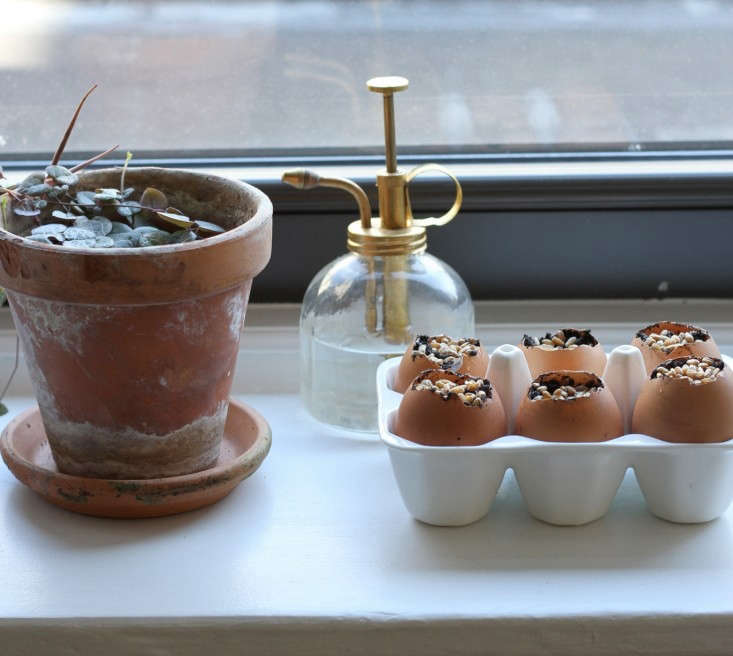Let’s first clear the air: Slow Gardening is not what you may think it is—lazy, almost sloth-like gardening. In fact, Slow Gardening is quite active. It’s about taking back your garden, removing the ‘mow and blow’ portion, and replacing it with pleasurable work in the garden, activities like growing your own food, planting from seed, and gardening with local resources. And Slow Gardening is more of a mindset, an attitude, a way of taking personal and environmental responsibility and becoming more aware of your surroundings.
This more mindful way of gardening was started by American horticulturist Felder Rushing and was inspired, not surprisingly, by the Slow Food movement founded by Carlo Petrini and a group of activists in the ’80s. The intrinsic beauty of this in-tune gardening style is that there are no stifling rules, no hard core dogmas, no overwhelming must-do checklists. With that said, however, there are some useful ideas around how to embrace this movement and enhance your Slow Gardening experience.
Is this style of gardening the right path for you? Please read on for tips on how to get started:
N.B.: Featured photograph by Leslie Santarina, from 12 Old-Fashioned Hardware Store Finds That Will Save You Money.
1. Don’t be like Veruca Salt.

Many homeowners fall into the trap of sounding like Veruca Salt from Charlie and the Chocolate Factory: “I want it now!” Slow Gardening isn’t about instant gratification. And, sure, it’s easy to be tempted by large nursery plants much like driving by a fast-food chain and getting food in a flash, but resist. Instead, embrace the smaller 4-inch container sized plants or grow your own from seed. Remember to ride the unpredictable journey of gardening, and welcome both successes and failures because ultimately gardening is about the process not the shiny golden end product.
2. Lose the lawn.

With water being a precious resource now more than ever, consider taking out all or a potion of your thirsty lawn and replacing it with a tasty cocktail of drought-tolerant, pollinator-attracting flowers, shrubs, and trees. By creating more diverse and wild areas in your garden, and by having a water-thrifty approach, you will encourage more wildlife and conserve water.
3. Spread (local) love.

Much like the Slow Food Movement whose adherents support local ingredients grown in an environmentally responsible manner, Slow Gardening supports the local farmers and businesses who bring you the freshest, healthiest, and most ethically made products.
4. Start small.

If this is your first garden, think about starting small, maybe one or two pots, then increasing your gardening space as your skills and confidence grows. Also choose plants that produce for a long time or reseed themselves. Lettuce is a great starter plant and an amazing cut and come again choice (bell peppers not so much). And resist the urge to take on a massive space and throw in everything pretty and flowering. Less really is more. (See The Garden Decoder: What Is ‘Square Foot Gardening’?)
5. Don’t keep up with the Joneses.

While it may be hard to resist what’s trending in the world of gardening, follow your own instincts, study your climate and garden space, and make thoughtful choices. Because ultimately, design styles and rules that apply to one garden don’t necessarily apply to yours. What someone else plants, how much they water, how many hours they spend on maintenance is not your set of guidelines. Besides, Slow Gardening is not supposed to be stressful, and it’s definitely not a mad dash race to reach harvest first. Try accepting a little chaos, some beautiful disorder, and ultimately don’t worry what the Joneses say.
6. Get to know the three R’s.

Repeat after me: reduce, reuse and recycle. This mantra will not only save on resources like fertilizer, water, and bagged soil but will also save you money. Compost is king for Slow Gardeners because successful gardening starts with healthy soil—so save your food scraps instead of adding them to the landfill and start your own compost pile.
7. Share the bounty.

It’s true that gardeners are notorious for being the sharing type and Slow Gardening is all about sharing your harvest, giving a clipping of a favorite plant to a favorite friend, leaving a bouquet of stellar dahlias on a porch. It’s about swapping knowledge and lessons learned.
8. Pull the plug.

Of course gas-powered blowers and mowers quickly clean up a garden mess, but these stinky and noisy juggernauts are detrimental to the environment because they produce harmful carbon dioxide. Simple tools like brooms and push mowers keep our air clean, produce quieter neighborhoods, and help you burn unwanted calories. Slow gardening is really about enjoying your garden, learning from it, working in it, eating from it, sharing it, growing with it—and definitely getting your hands dirty.
For more on eco-minded gardening practices, see:
- The Garden Decoder: What Is ‘Xeriscaping’?
- Landscaping Ideas: 16 Simple Solutions for Sustainability
- Your First Garden: The Surprising (And Best) Reason to Start Composting









Have a Question or Comment About This Post?
Join the conversation